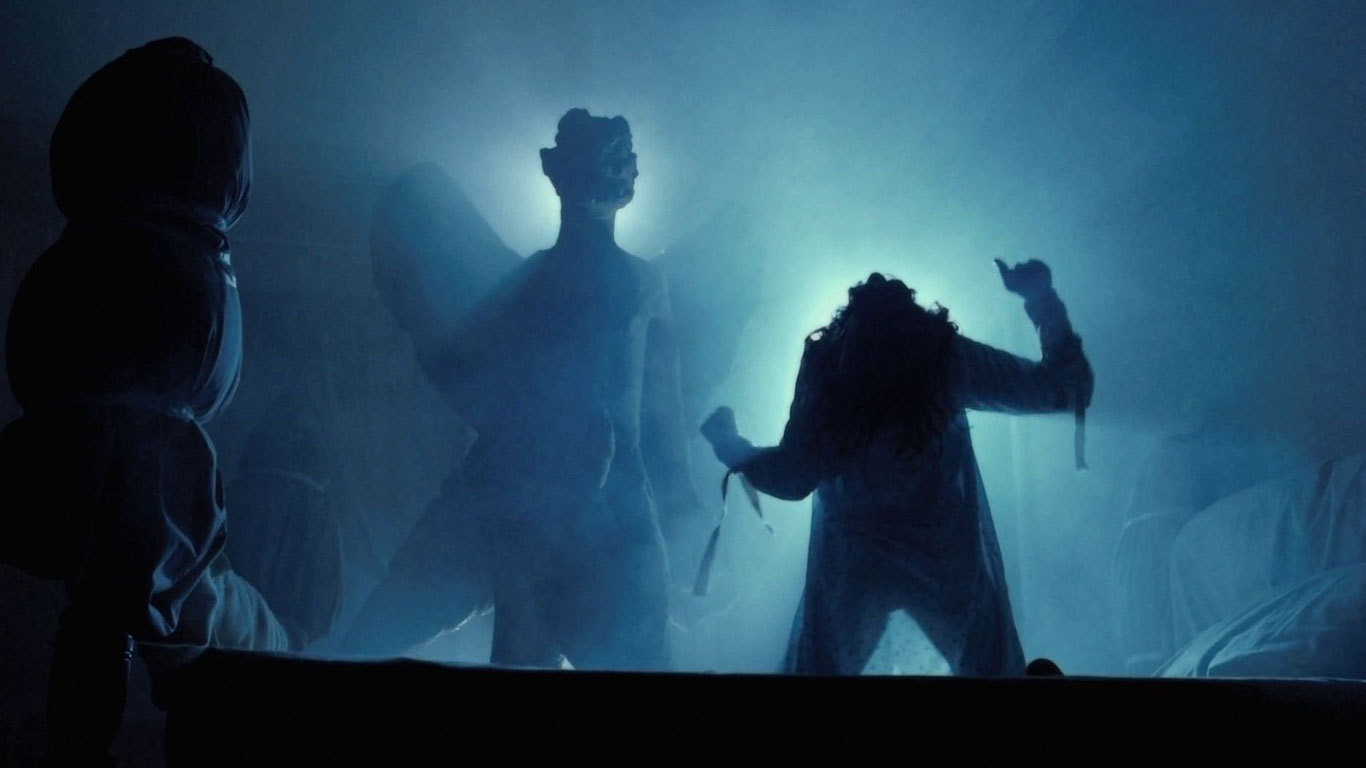
The Exorcist (USA: William Friedkin, 1973: 122 mins)
Acolytes of Horror. "How the Exorcist Keeps Its Distance." (Posted on Youtube: 2021)
Brown, Michael. "The Demon Pazuzu as Noise in The Exorcist." Revenant #3 (March 2018) ["Against a blackened screen blood-red lettering announces the beginning of William Friedkin’s The Exorcist (1973). But it is not only what we see that unnerves us, it is what we hear. From the very first discordant strings’ sudden transition into the adhᾱn, the Muslim call to prayer, the film creates an atmosphere of uncertainty through its innovative sound design. While sound and horror share a long-established history in the production of cinematic dread, sound in The Exorcist does more than simply prompt an emotive response or mood in audiences. Rather, by listening closely to the sonic elements of the often critically unappreciated Iraq prologue, I will demonstrate that the central evil of the narrative, the demon Pazuzu, is in fact best understood as ‘noise’. By reflecting on media theory’s concept of noise as one with affective, ontological and philosophical concerns this essay will argue for a renewed critical approach to the film, one which recognises the demon’s aural association with wind, shrieking voices, garbled language and insect drone as intimately bound to its function as a disruptive and destabilising agency. Accordingly, the possessed body of the film’s adolescent protagonist Regan MacNeil’s (Linda Blair) is aurally and visually constructed as a medium, albeit one that is immersed in noise. I will argue that a sounds studies perspective is useful in identifying a more diffuse kind of horror in The Exorcist beyond its more obvious religious anxieties and visceral special effects, one that, like the presence of noise, disturbs our ability to make sense of the world as something essentially knowable and hence, meaningful. As such the climatic rite of exorcism resembles a communicative performance wherein the exorcist is called upon to expel noise and re-establish meaning through restorative acts of language."]
Graham, Jamie, et al. "Occult Pt. 10: The Exorcist (1973)." The Evolution of Horror (January 2, 2020)
Hudson, David. "Remembering William Friedkin." Current (August 11, 2023)
"Rats In the Attic: William Friedkin’s The Exorcist." Cinephilia & Beyond (ND)
Kermode, Mark. The Exorcist. British Film Institute, 2020. ["Inspired by an alleged real case of demonic possession in 1949, The Exorcist became an international phenomenon on its release in 1973. A blockbusting adaptation of a best-selling novel, it was praised as 'deeply spiritual' by some sections of the Catholic Church while being picketed by the Festival of Light and branded 'Satanic' by the evangelist Billy Graham. Banned on video in the UK for nearly fifteen years, the film still retains an extraordinary power to shock and startle. Mark Kermode's compelling study of this horror classic was originally published in 1997, and then extensively updated and expanded in 2003 to incorporate the discovery of new material. This revised edition documents the deletion and reinstatement of key scenes that have now been integrated into the film to create The Exorcist: The Version You've Never Seen. Candid interviews with director William Friedkin and writer/producer William Peter Blatty reveal the behind the-scenes battles which took place during the production. In addition, exclusive stills reveal the truth about the legendary 'subliminal images' allegedly lurking within the celluloid."]
Murray, Noel. "William Friedkin and the Art of Immediacy." The Dissolve (May 1, 2014)
Romano, Aja. "Why the Satanic Panic never really ended." Vox (March 31, 2021)
"The Scariest Film of All Time?: Revisiting the Hysteria in 1973 Around The Exorcist by William Friedkin (RIP)." Open Culture (October 15, 2020)
Wiggins, Steven A. "Nightmares with the Bible: The Good Book and Cinematic Demons (Horror and Scripture, 2020)." New Books in Biblical Studies (April 27, 2022) ["Nightmares with the Bible: The Good Book and Cinematic Demons (2021) published by Fortress Academic views demons through two lenses: that of western religion and that of cinema. Sketching out the long fear of demons in western history, including the Bible, Steve A. Wiggins moves on to analyze how popular movies inform our beliefs about demonic forces. Beginning with the idea of possession, he explores the portrayal of demons from ancient Mesopotamia and the biblical world (including in select extra-biblical texts), and then examines the portrayal of demons in popular horror franchises The Conjuring, The Amityville Horror, and Paranormal Activity. In the final chapter, Wiggins looks at movies that followed The Exorcist and offers new perspectives for viewing possession and exorcism. Written in non-technical language, this book is intended for anyone interested in how demons are perceived and how popular culture informs those perceptions."]
No comments:
Post a Comment